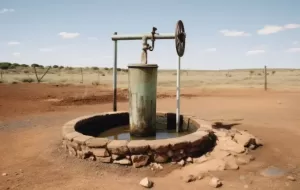Have you ever heard of the term “well shocking”? If you’re unfamiliar with it, this article will guide you through this essential process that ensures the safety of water wells.
What Exactly is Well Shocking?
Well shocking, commonly referred to as well disinfection or chlorination, is a procedure aimed at eliminating harmful bacteria, viruses, and other unwanted microorganisms lurking in a water well. The goal is to purify the water, making it safe for drinking. This is achieved by introducing chlorine or another approved disinfectant into the well. Let’s dive into a comprehensive, step-by-step guide to this process:
chlorination, is a procedure aimed at eliminating harmful bacteria, viruses, and other unwanted microorganisms lurking in a water well. The goal is to purify the water, making it safe for drinking. This is achieved by introducing chlorine or another approved disinfectant into the well. Let’s dive into a comprehensive, step-by-step guide to this process:
Step-by-Step Guide to Well Shocking:
- Gather Your Supplies:
- Chlorine bleach or a different disinfectant approved for wells.
- Essential safety gear including gloves and protective goggles.
- A container for precise disinfectant measurements.
- A sturdy rod or similar tool for stirring.
- Power Down the Well Pump: Before embarking on this process, make sure to turn off the power to your well pump. This precaution helps in avoiding any unforeseen electrical mishaps.
- Determine the Required Amount of Disinfectant: The amount varies based on the well’s depth and diameter. Always adhere to the recommendations from your local health authority or a trusted well expert when determining the correct dosage.
- Preparation of the Disinfectant Solution: Mix the chlorine bleach or chosen disinfectant with fresh water, creating a solution ready for use. Exercise caution when working with potent disinfectants, as they can be hazardous if mismanaged.
- Introduce the Disinfectant to the Well: With meticulous care, pour the solution into the well casing, using tools like funnels to prevent any spillage.
- Ensure Proper Circulation: Connect a hose to a nearby tap and position it into the well casing. Switch on the tap, allowing the water to flow through the well for a minimum of 30 minutes, making certain the disinfectant solution reaches all nooks and crannies.
- Restart the Well Pump: Power up the well pump and keep an eye (or nose) out for the distinct chlorine scent in the water from the tap. This smell signifies that the disinfectant has permeated the entire system.
- Allow Disinfectant to Work its Magic: Let the disinfectant remain in the well and the distribution system for 12 to 24 hours. This time allows the disinfectant to effectively neutralize harmful microorganisms.
- System Flush: Post the stipulated contact period, activate all faucets and thoroughly cleanse the well system until there’s no hint of chlorine aroma in the water.
- Quality Check: Post-cleansing, collect a water sample and forward it to a certified lab. They’ll test it for bacteria to confirm the disinfection’s success and to ensure the water is safe for use.
Why Might You Need to Shock Your Well?
- Bacterial Intrusion: Wells are susceptible to dangerous bacteria like E. coli. Such contamination can arise from damaged casings, nearby sewage systems, or even water seepage during intense rain.
- Aesthetic Concerns: At times, the water might acquire a foul smell or taste, thanks to specific bacteria. Well shocking can rectify these sensory issues.
- Regular Upkeep: Periodic disinfection is a part of well maintenance to ensure water remains potable.
- Post Repair/Construction Measures: Repairs or new well constructions can inadvertently introduce contaminants. Post-repair well shocking ensures any such contamination is addressed.
- Before Quality Tests: Shocking can sometimes precede water quality tests, ensuring any sporadic contamination is dealt with, yielding more precise test outcomes.
- Addressing Continuous Contamination: For wells constantly showing contamination signs, shocking provides a reset, setting the stage for additional water quality enhancements.
Safety First!
When shocking your well, always:
- Opt for recommended disinfectants and use them in the right concentrations.
- Abide by guidelines from health departments or well professionals.
- Wear the right safety gear.
- Ensure the disinfectant circulates throughout the well.
- Remember to flush out the disinfectant before consuming the water.
Should you face persistent contamination or have concerns about water quality, always seek expert guidance. Regular maintenance and water testing are pivotal for the well’s longevity and for ensuring a consistent supply of safe water.


